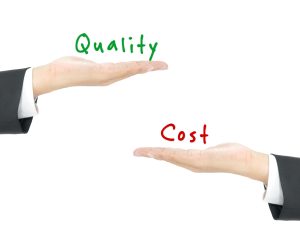The Point
1. If you don’t know the quality of what you’ve bought, no amount or kind of cost data can tell you if it’s money well spent.
2. The Thomson Reuters’ 2022 Legal Department Operations Index reported that 70% of corporate legal departments track total spending by law firm, and that other cost-control categories comprised 13 of the top 16 data sets on which they focused management attention.
3. But a mere 8% reported quality of legal outcomes among their top 3 focus areas, prompting one legal tech provider to observe: “Only 8% of Legal Teams Care About Quality. Really?”
4. Karen Skinner, of Gimbal Canada, one of the top half dozen law practice management experts in North America, had a different view:
“In-house teams not interested in quality of legal outcomes? It’s more likely they have no easy way to measure quality.”
This Matters to Your Business
Management disciplines are largely useless without measurements selected for their specific relevance to the corporate function or business unit concerned. Peter Drucker identified the establishment of, and, close attention to, measurements in offering five elements of executive effectiveness in Management: Tasks, Responsibilities, Practices (using gender-specific language in 1973):
“[The manager] establishes yardsticks — and few factors are as important to the performance of the organization and of every man in it. He sees to it that each man has measurements available to him which are focused on the performance of the organization and which, at the same time, focus on the work of the individual and help him do it.”
In-house departments — and the law firms they hire — lack any* of the kinds of “yardsticks” to which Drucker referred. So they lack quality-relevant criteria by which to evaluate legal work done for them.
Because …
But lack of measurements on quality of legal outcomes is only part of Legal’s problem. Measurements are necessary, but they are not sufficient, to determine quality in the corporate legal function.
As someone who participated firsthand in Jack Welch’s Six Sigma drive at GE, I can testify that measurements need to be integrated into both strategy and day-to-day decision-making. Measurements translate into effective business results only in the context of comprehensive management disciplines that come from the top and are implemented throughout the organization.
But, with small-scale exceptions, the legal profession has had no counterpart to the quality movement we’ve seen infused into U.S. businesses over the past three decades.
A bit of good news: There are beginnings of a quality movement in law. It’s comprised of academics, technology experts, a new subset of expert called “legal operations” professionals, and a tiny minority of lawyers.
Exhibit A: Professor Dan Linna, former equity partner of a BigLaw firm, now Director of Law & Technology Initiatives at Northwestern University Pritzker School of Law. Video here. “Evaluating Legal Services: The Need for a Quality Movement and Standard Measures of Quality and Value”, in Research Handbook on Big Data Law, edited by Roland Vogl (2021).
* Only two forms of “measurement” consistently come up in discussions of law department or law firm performance. As identified above, one of them is cost — focused on law firm fees. The other is “productivity”. In the law firm context, this word denotes gross hours billed to clients (not, as in the rest of business usage, output per unit of effort).
 Managing Legal
Managing Legal



